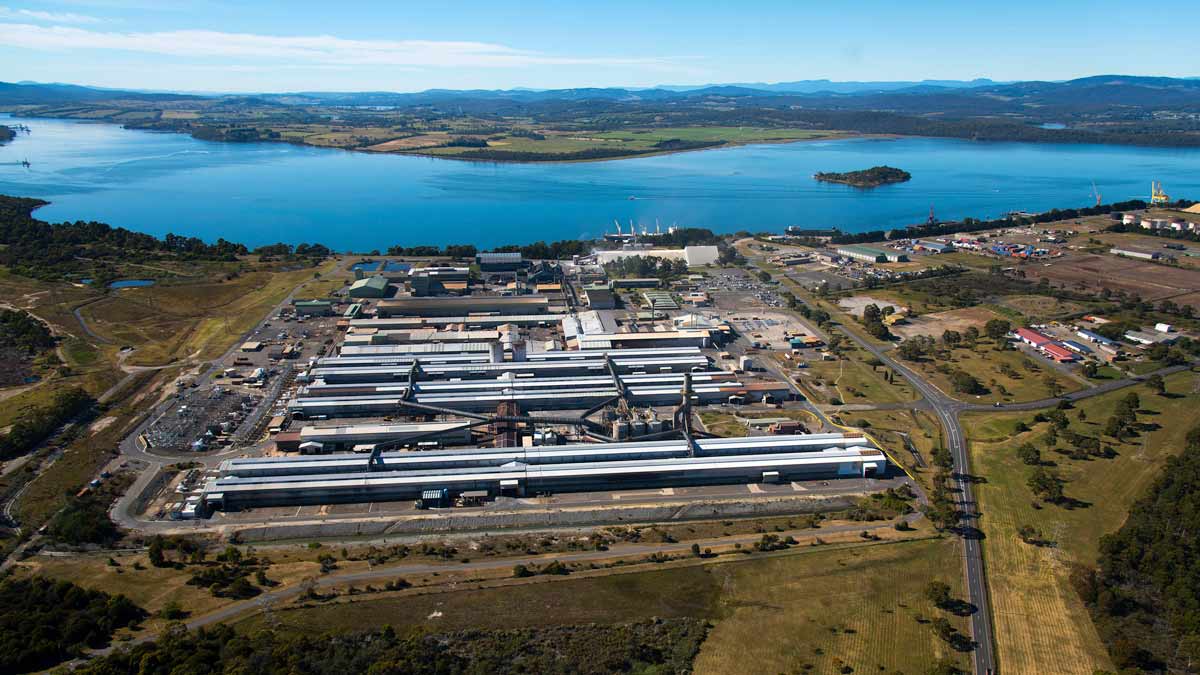Rio Tinto has signed a deal with the Tasmania government that secures the long-term future of the Bell Bay aluminium smelter, and will look to onsite electrolyers for hydrogen production to boost the demand for new renewables in the island state.
Under the MoU with the state government, Rio Tinto has committed to continue running the Bell Bay smelter until at least 2030, while it looks to longer term arrangements, including a potential expansion of its smelting operations.
Rio Tinto has agreed to prepare a business case for the production of hydrogen onsite, using electrolysis, with the aim of replacing existing supplies of fossil gas – and will prepare similar plans for incorporating the smelter in a potential demand response mechanism.
“Rio Tinto will complete business cases for direct investment in and/or underwriting of new renewable generation projects near BBA in Tasmania,” the MoU says.
Tasmania has unveiled plans to double its renewable energy capacity – to 200 per cent renewables – by 2040, largely through creating load centres such as green hydrogen production, or through more contested ideas such as the Marinus Link to Victoria.
“With appropriate commercial conditions, Rio Tinto will provide load and demand side flexibility to support the Marinus business case and load growth through agreed mechanisms,” the MoU says.
In return, the Tasmanian government has committed to facilitating negotiations with the government owned utility Hydro Tasmania regarding the terms of an electricity supply agreement and the smelter’s potential participation in demand response activities.
Aluminium smelters are huge consumers of electricity, so securing access to lower cost supplies of power is crucial to the long-term viability of any smelter. Most of the smelters on the mainland, which rely mostly on coal power, are now looking to switch to renewables by the end of the decade to cut costs and emissions.
The Bell Bay smelter employs more than 500 local workers, and the offer from the Tasmanian government to facilitate low-cost electricity supplies will allow the smelter to operate profitably.
“Aluminium is essential for the global transition to a low-carbon economy, and we are excited about the contribution our Bell Bay smelter can make both towards this transition and to the region’s future,” Rio Tinto chief executive Jakob Stausholm said.
“We want to help ensure a strong and vibrant future for Bell Bay, where we have been part of the community for well over half a century and where we are actively working with the Tasmanian Government on a shared vision for the future.”
The Tasmanian government has also committed to undertake work to identify and incentivise the development of new generation and transmission infrastructure in the state, in support of the state’s ambitious renewable energy target.
Tasmanian premier Peter Gutwein said the partnership agreement with Rio Tinto had the potential to support the creation of new industries and expand the state’s renewable energy capacity.
“This MoU is a strong demonstration of our shared commitment to Tasmania’s economic and industrial future and reinforces the State’s renewable energy credentials,” Gutwein said.
The Bell Bay industrial precinct has been a focus of the Tasmanian government’s plans for growing its green industries and the production of zero-emissions hydrogen and ammonia.
“No other jurisdiction in this country is ever going to get to where we are, that is to have 100 per cent renewables. So in terms of hydrogen, we have very lofty ambitions in terms of ensuring that we can develop green hydrogen here in this precinct at Bell Bay,” Gutwein said.
Oil and gas producer Woodside announced that it had secured land in the Bell Bay region for a proposed green hydrogen and ammonia production facility.
It could eventually see as much as 1.7GW of electrolyser capacity installed near Bell Bay. Fortescue secured a similar deal for a location in Bell Bay for its own green hydrogen ambitions, as it progresses plans for a 250MW renewable hydrogen facility.










